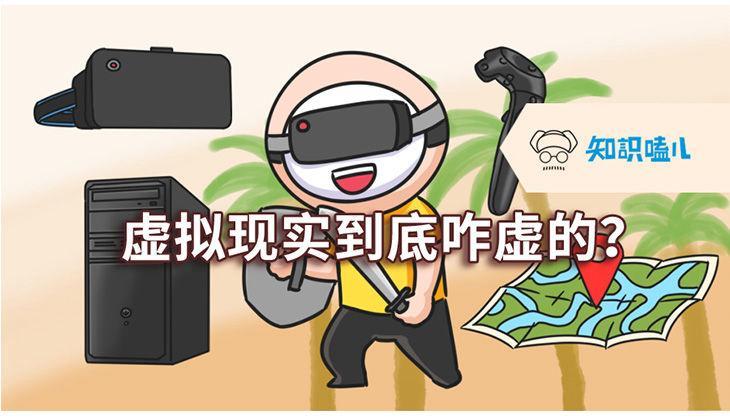
Half real or half virtual?
Those who begin to enter the world of virtual and digital technology will quickly realize that the boundaries between the concepts used here are rather blurred. This is probably why the concept of mixed reality is becoming popular - it generally well reflects the meaning of what is happening in this matter.
Virtual reality capacious term. It can be defined as a group of technologies that allow people to effectively interact with XNUMXD computerized databases in real time using natural senses and skills (sight, hearing, touch, smell). Can also be used as an extended form human-machine interfacewhich allows the user to immerse themselves in the computer-generated environment and interact with it in a natural way - special equipment can be used to achieve the feeling of being in it.
Virtual reality is different 3× i (immersion, interaction, imagination) – the experience of immersing users in a completely artificial digital environment. This may be a personal experience, but it can also be shared with others.
The first systems based on the idea of VR were mechanical and date back to the early 60th century, followed by electrical and electronic systems using video, and finally computer systems. In the XNUMXth it was loud Sensor, offering 3D color, vibration, smells, stereo sound, gust of wind and similar sensations. In this early version of VR, you could, for example, "across Brooklyn." However, for the first time the term "virtual reality" was used Charon Lanier in 1986 and meant an artificial world created with the help of special software and additional accessories.
From immersion to interaction
The simplest VR system is the so-called window to the world () - a classic monitor (or stereography) plus realistic sound and special manipulators. Layout “with my own eyes" () allows the user to control the virtual actor and see the world through its eyes. Systems partial immersion () consist of a helmet and a glove for manipulating virtual objects. Systems full immersion () also use special costumes that allow them to convert signals from the virtual world into perceived stimuli.
Finally, we come to the concept ecological systems (). Achieving the effect of immersion in them becomes dependent on the quantity and quality of stimuli from the virtual and real world, which we perceive with our senses. An example is the CAVE (), that is, entire rooms equipped with specialized screens on the walls, the shape of which makes it easier to “penetrate” the virtual world and feel it with all the senses. Image and sound surround a person from all sides, and entire groups can also “immerse”.
Augmented Reality superimposed on virtual objects of the real world. The displayed images provide additional information using flat objects and 3D renderings. Content comes to us directly through a special display, which, however, does not allow interaction. Well-known examples of augmented reality devices are glasses Google glasscontrolled by voice, buttons and gestures. It has also been very popular lately, which is the first thing that has helped increase people's awareness of augmented reality.
Trying to define mixed reality (MR) is described as one that, like AR, superimposes virtual objects on reality, but has the principle of constantly injecting virtual objects into the real world.
The term "mixed reality" appears to have been first introduced in 1994 in the article "A Taxonomy of Mixed Reality Visual Displays". Paula Milgrama i Fumio Kishino. This is usually understood as a combination of all three factors - computer processing, human input and environmental input. Moving in the physical world can lead to moving in the digital world. Boundaries in the physical world can affect applications such as games in the digital world.
It's more or less a project idea Microsoft HoloLens goggles. At first glance, it is only slightly more advanced than Google Glass, but there is a small but very significant detail - interactivity. A hologram is superimposed on the real image, with which we can interact. Its distance and location are determined by room scanning, which constantly calculates the distance between the helmet and its surroundings. Displayed images can be positioned statically anywhere, whether they are static or animated.
The version of the game "Minecraft" presented for HoloLens perfectly demonstrated the wide range of interactions with the hologram, which we can move, expand, shrink, increase or decrease. This is just one of the suggestions, but it allows you to understand how many areas of your life can be used by additional data and smart applications.
Mixed Reality with Microsoft HoloLens
Confusion
To experience virtual reality, you must wear a special () VR headset. Some of these devices connect to a computer (Oculus Rift) or game console (PlayStation VR), but there are also standalone devices (Google Cardboard is one of the most popular). Most standalone VR headsets work with smartphones—simply plug in your smartphone, put on the headset, and you're ready to immerse yourself in virtual reality.
In augmented reality, users see the real world and then see and possibly react to the digital content added to it. Just like in, where millions of people travel the real world with their smartphones in search of small virtual creatures. If you only have a modern smartphone, you can easily download the AR app and try out the technology.
Mixed reality is a relatively new concept, so it can create some... confusion. There is an MR that starts with real reality - virtual objects do not intersect with reality, but can interact with it. At the same time, the user remains in a real environment in which digital content is added. However, there is also mixed reality, which begins with the virtual world - the digital environment is fixed and replaces the real world. In this case, the user remains completely immersed in the virtual environment while the real world is blocked. How is this different from VR? In this variant of MR, digital objects coincide with real objects, while in the VR definition, the virtual environment is not related to the real world around the user.
Just like in Star Wars
Projection of scientists from Brigham Young University
Superimposing virtual objects on reality usually involves the use of equipment, goggles or goggles. A more universal version of mixed reality would be visible to everyone around, without special equipment, projections, known, for example, from Star Wars. Such holograms can be found even at concerts (the late Michael Jackson dancing on stage). However, physicists at Brigham Young University in Utah recently reported in the journal Nature that they have developed perhaps the best 3D imaging technology known to date, though they don't call it holograms.
A team led by Daniel Smalley developed a XNUMXD moving image system that can be viewed from any angle.
Smalley told Nature News.
The traditional hologram in its current form is a projection of an image from a source limited to a certain viewing angle. It cannot be viewed from all sides in the same way. In the meantime, Smalley's team has developed a method they call XNUMXD mapping. It captures a single particle of cellulose fiber and is evenly heated by laser beams. To illuminate a particle passing through space, pushed and pulled by the action of the rays, visible light is projected onto it using a second set of lasers.
Digital land for sale
Here's some news from science labs. However, it turns out that the mixing of realities may soon become global. John Hanke - CEO of Niantic (best known for introducing "Pokémon Go") - at a recent GamesBeat conference, spoke about a new project sometimes referred to as (digital earth). The idea is getting closer and closer to reality thanks to Arcona, a startup creating an augmented reality layer stretched across the surface of our planet. The company has developed a number of algorithms to facilitate mass adoption of mobile AR.
The main idea of the project is to make augmented reality even more closely intertwined with the real world. Thanks to Arcona algorithms and the use of block technology, 3D content can be placed remotely and with stable positioning, allowing users to create digital enhancements from anywhere in the world. The company has already begun building layers in some major cities such as Tokyo, Rome, New York and London. Ultimately, the goal is to create a XNUMXD real-time XNUMXD map of the entire world that will serve as a cloud infrastructure for various augmented reality projects.
Arcona offer visualization
At the moment, the company has “sold” 5 million m2 your digital land in the best locations in Madrid, Tokyo and New York. Over 15 XNUMX users have joined the community in Arkona. Experts explain that it is easy to imagine interesting and practical applications of this technology. The real estate sector can, for example, use the AR layer to showcase to their clients what completed projects will look like when they are completed. The tourism industry will have the opportunity to delight visitors with the recreation of historical sites that no longer exist. The Digital Earth could easily allow people from opposite sides of the globe to meet and collaborate as if they were in the same room.
According to some, when the mixed reality layer is completed, it could become the most important IT infrastructure in the world of tomorrow - much more important and valuable than Facebook's social graph or Google's search engine algorithm.
